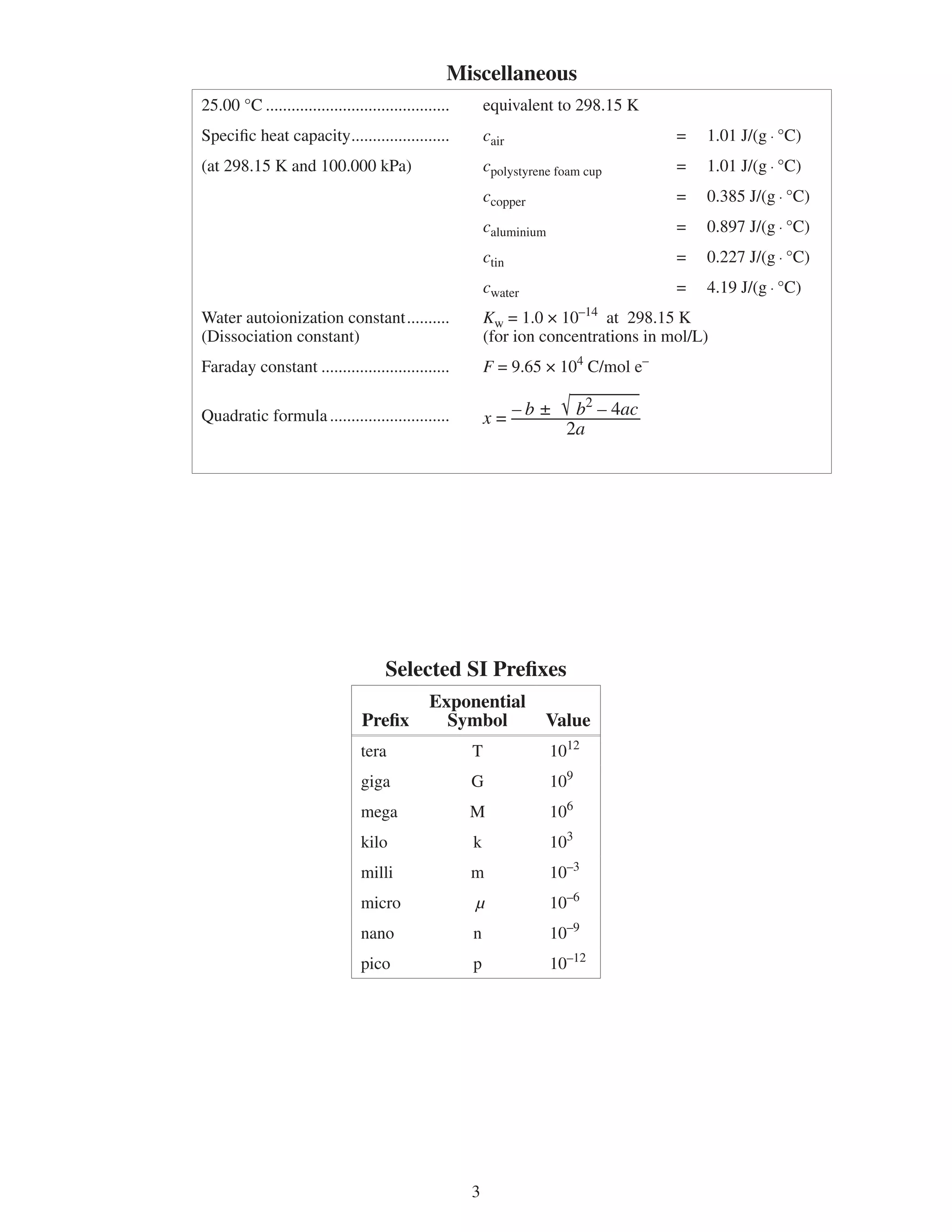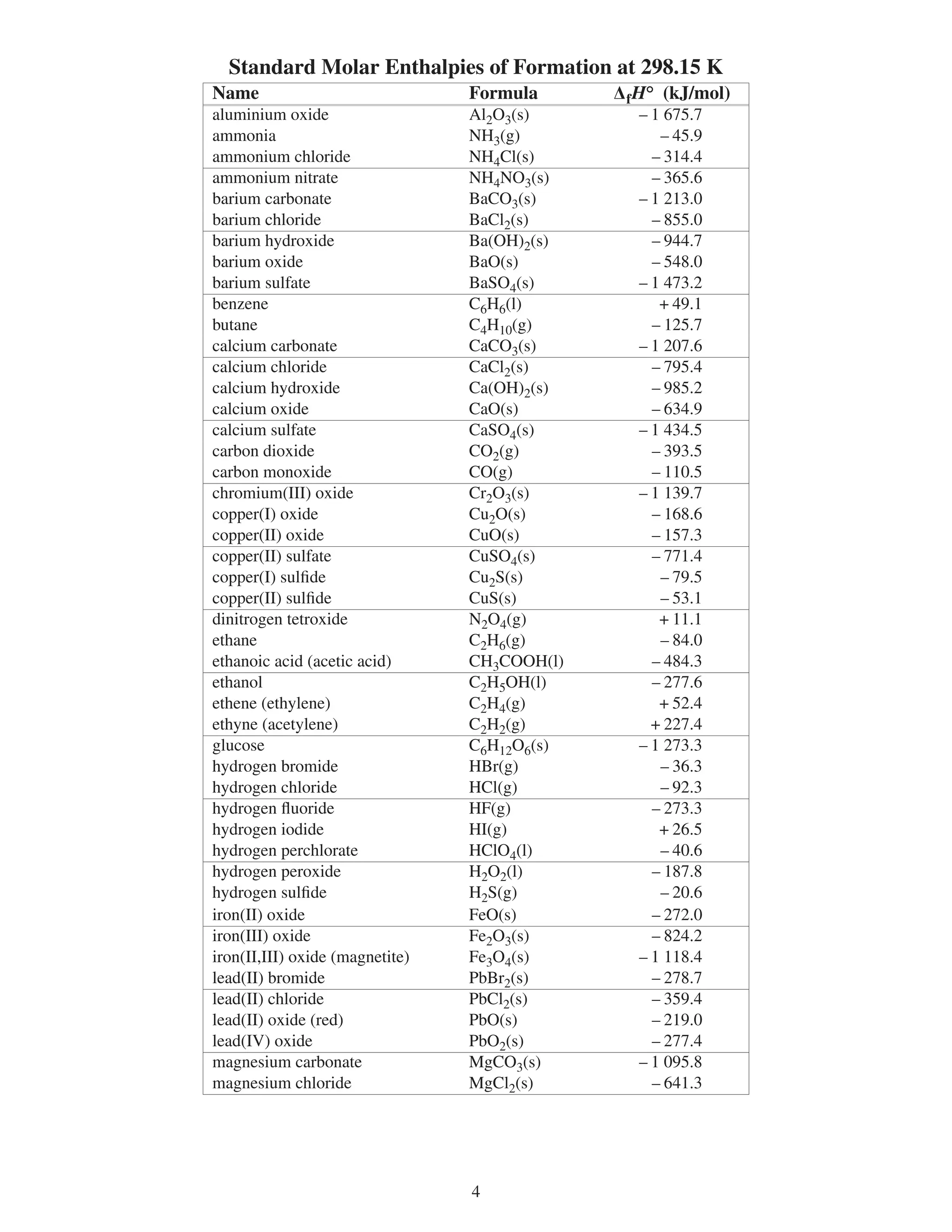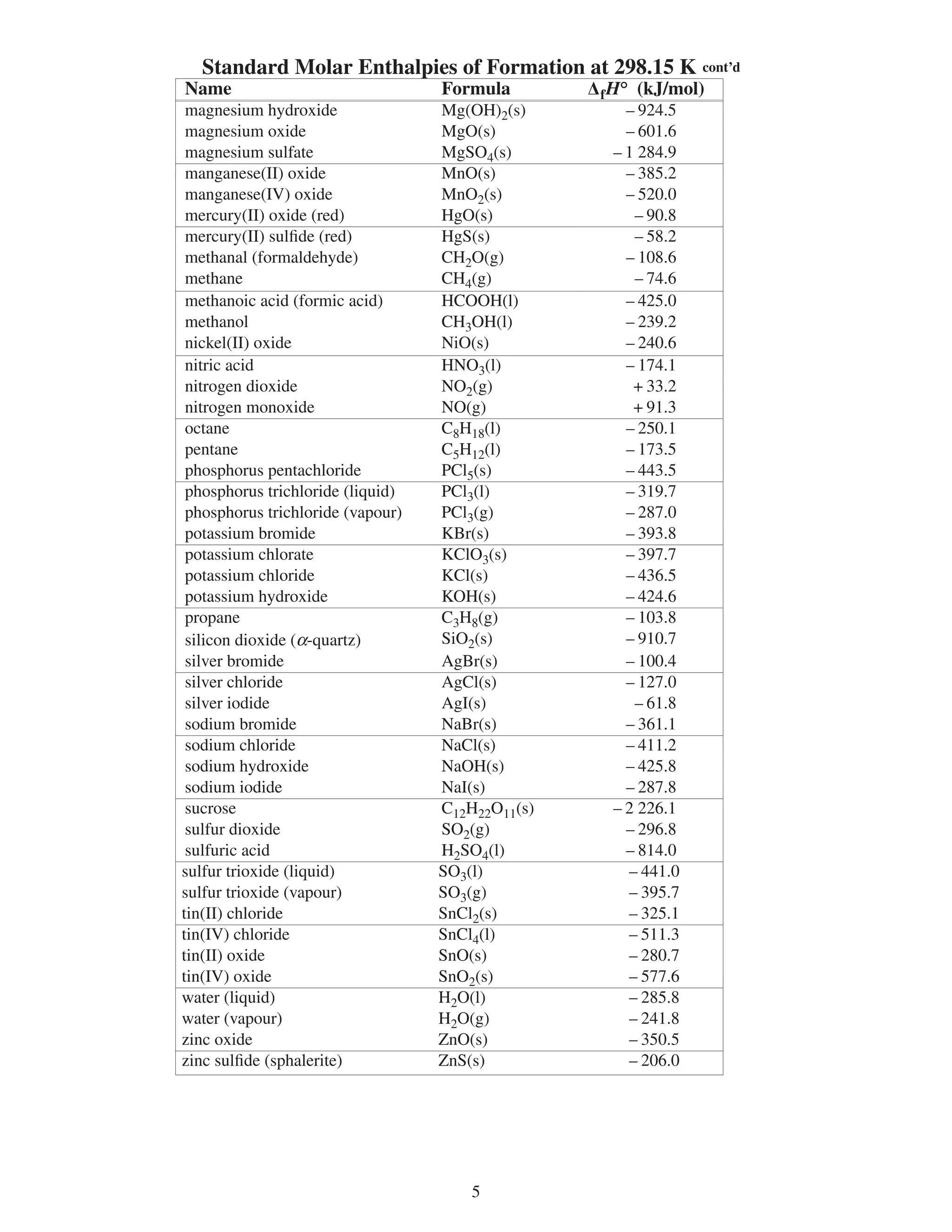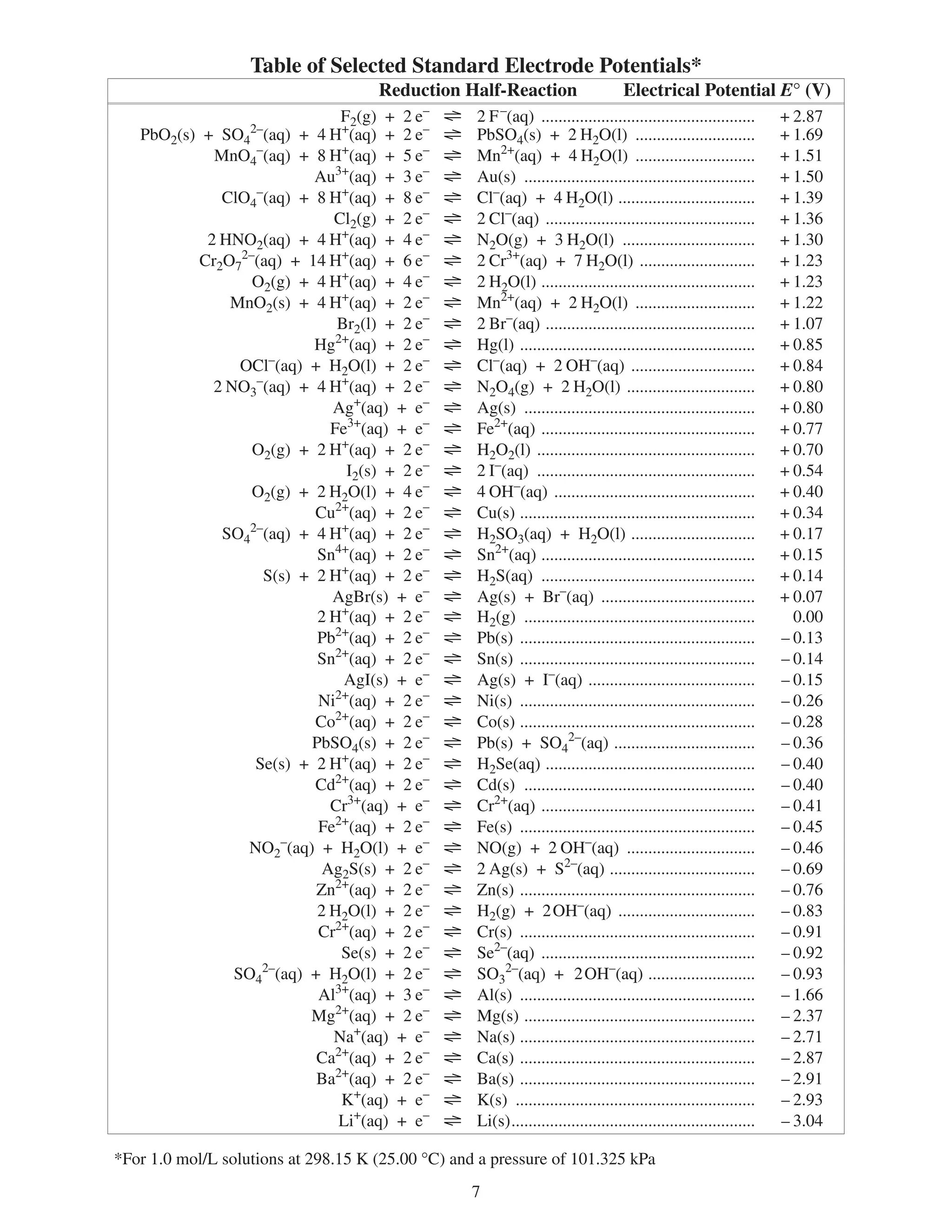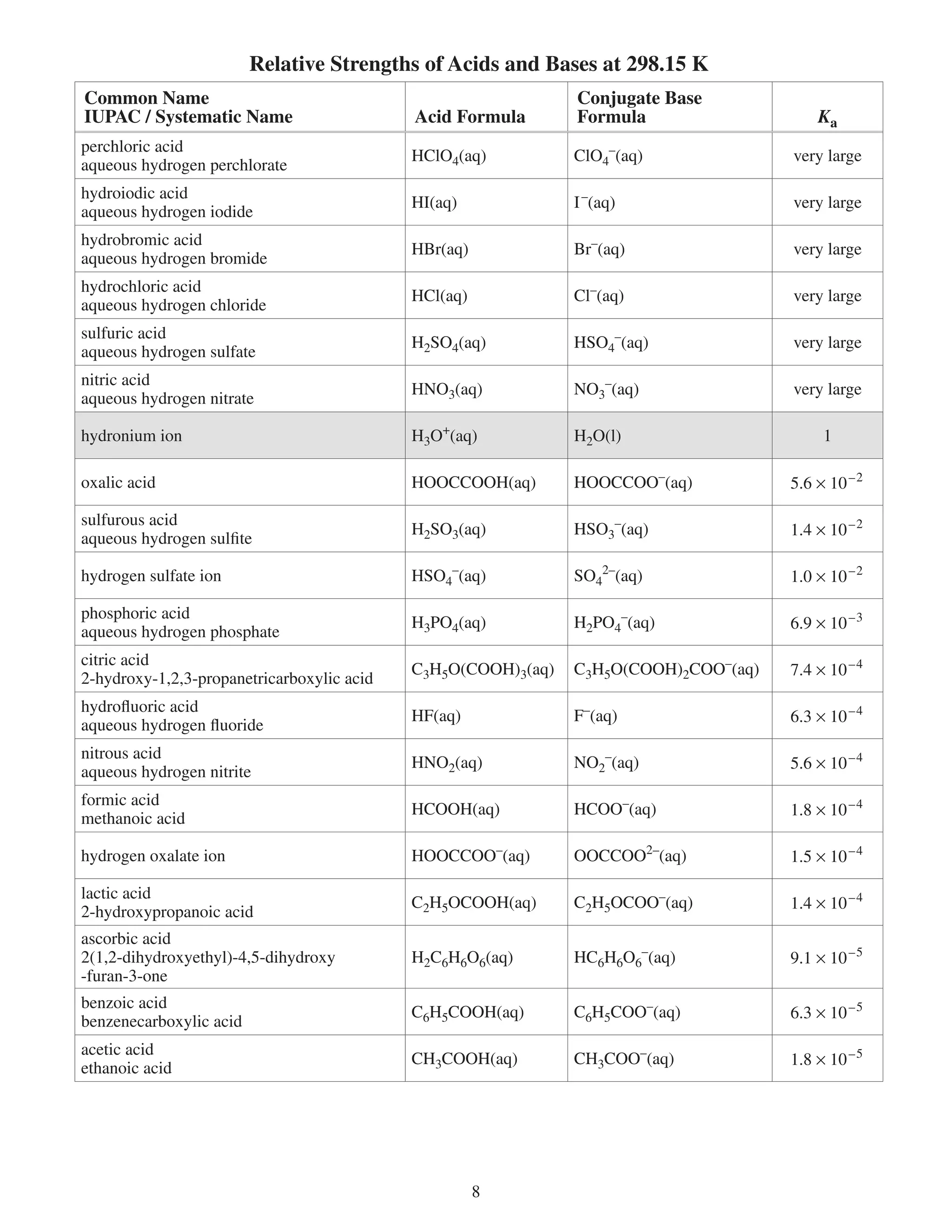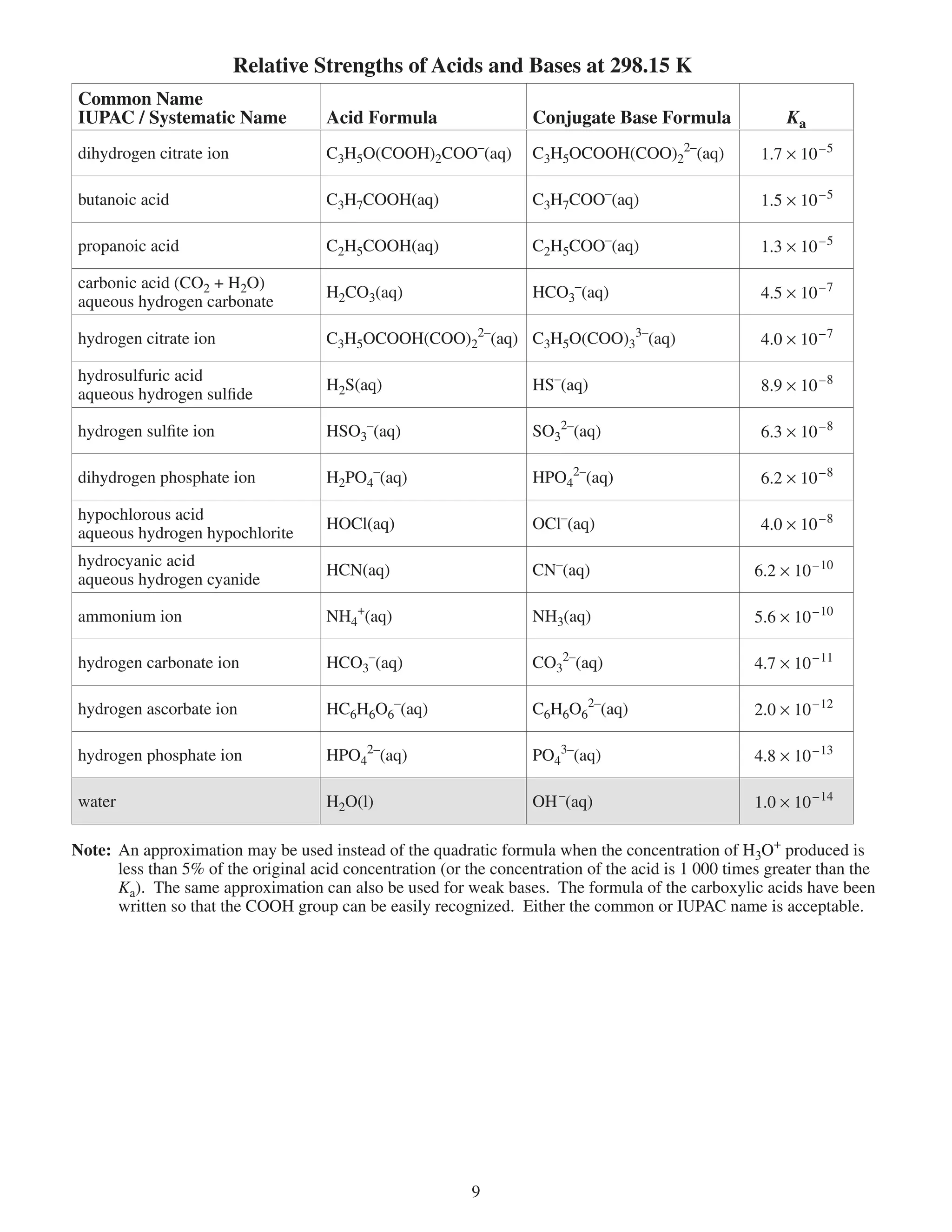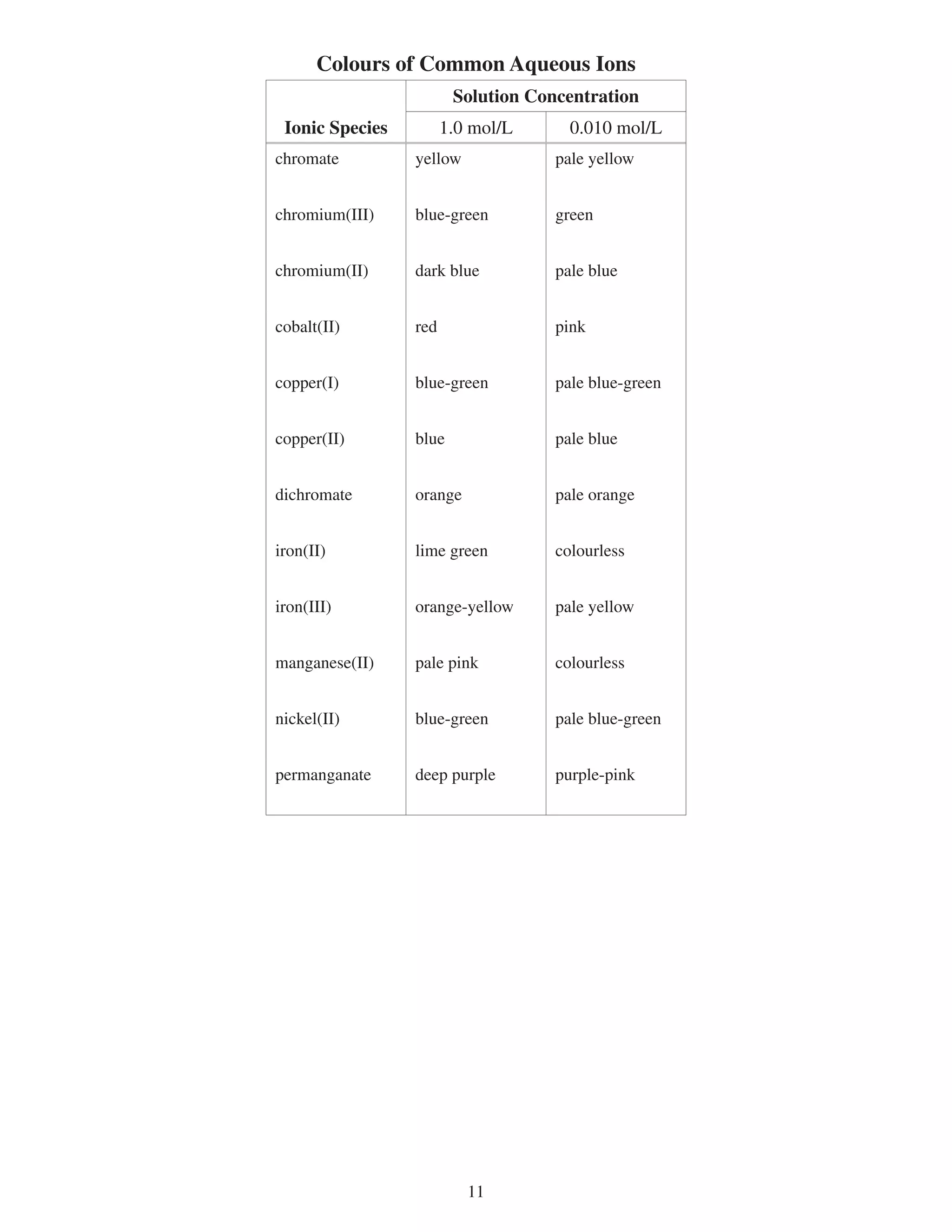This document provides a data booklet with information on chemistry elements and concepts. It includes the atomic number, symbol, name, and other properties for each element from hydrogen to lawrencium. It also lists common chemistry notation, selected SI prefixes, miscellaneous conversion factors, and standard molar enthalpies of formation for various compounds.
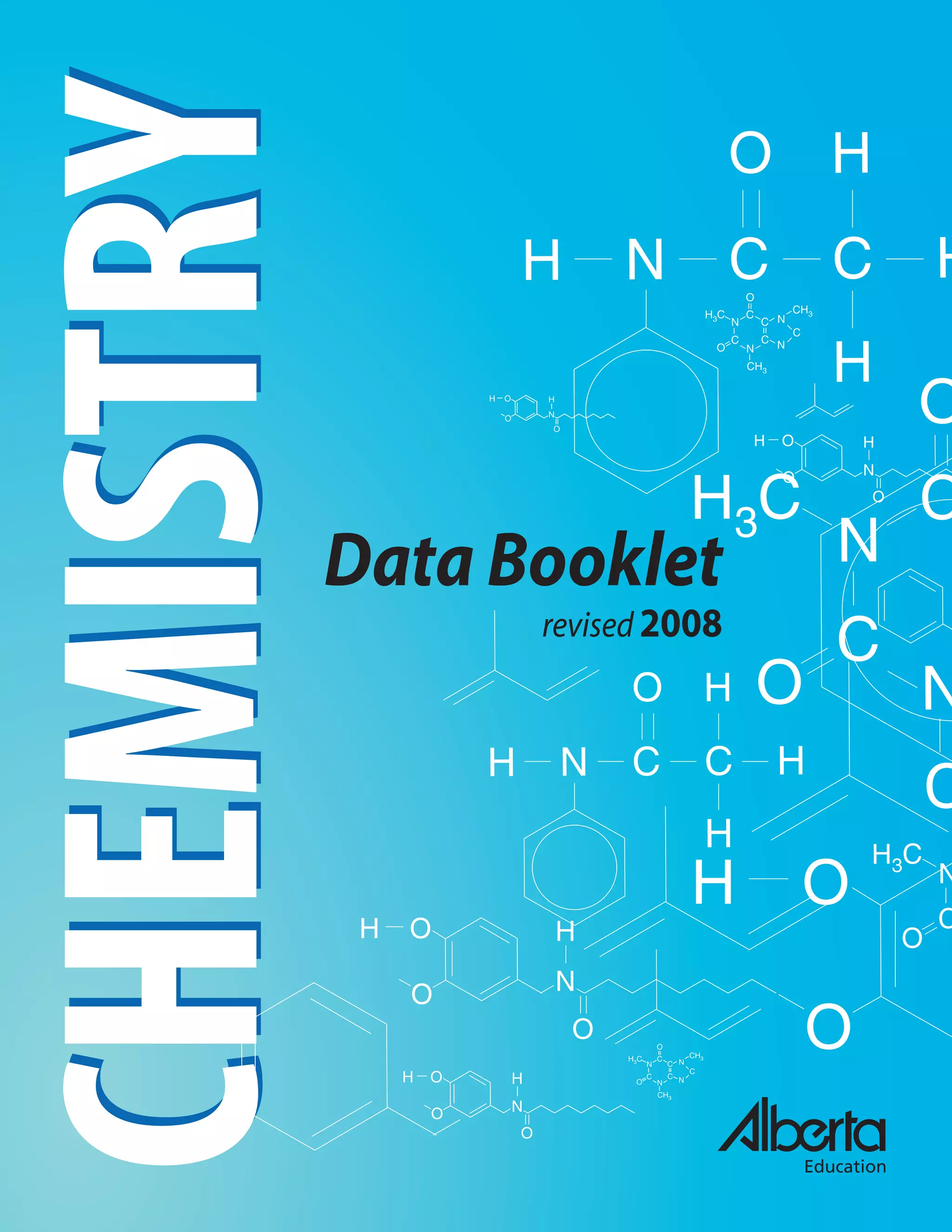
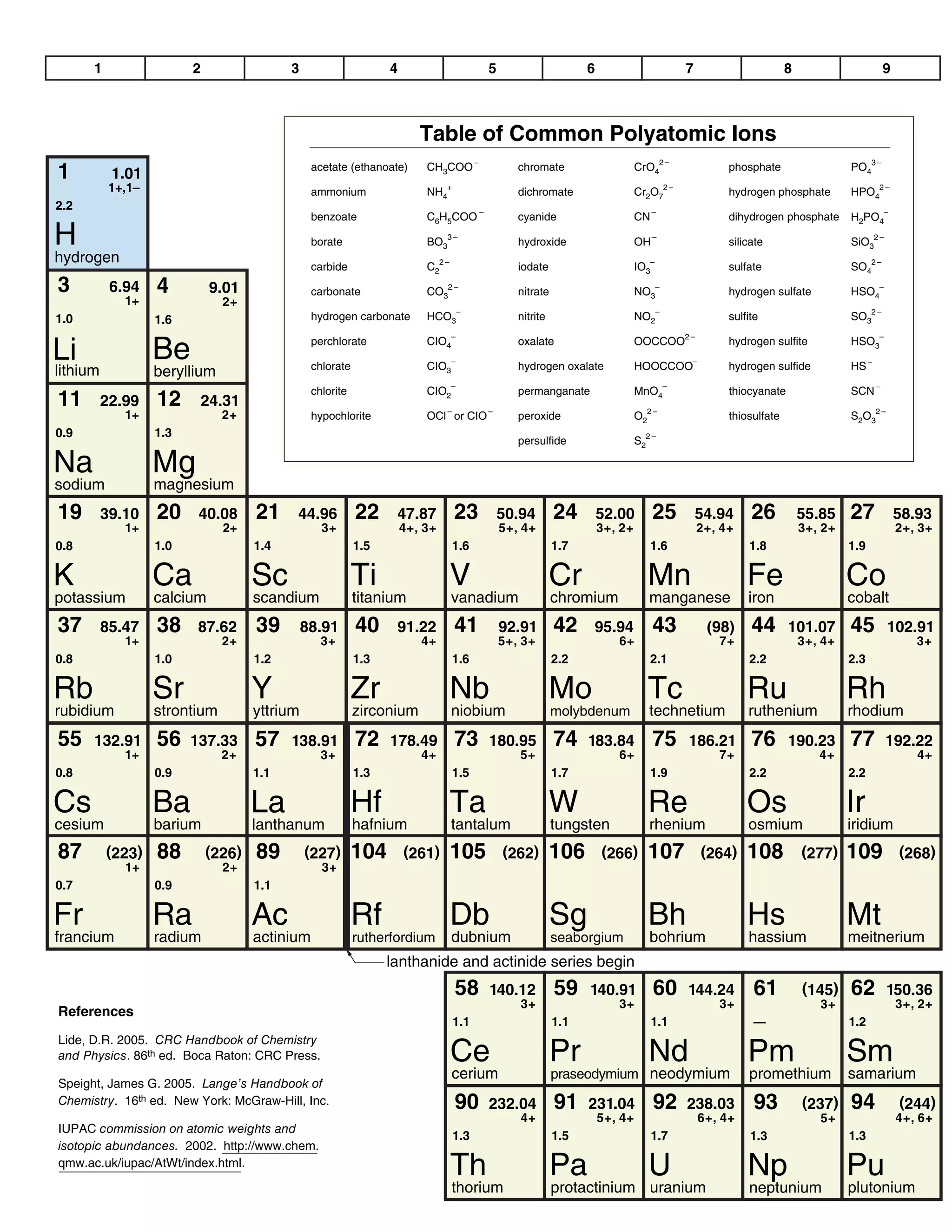

![Chemistry Notation
Symbol Term Unit(s)
c specific heat capacity J/(g · ºC) or J/(g · K)
C heat capacity J/ºC or J/K
E electrical potential V or J/C
Ek kinetic energy kJ
Ep potential energy kJ
∆H enthalpy (heat) kJ
∆fHº standard molar enthalpy of formation kJ/mol
I current A or C/s
Kc equilibrium constant —
Ka acid ionization (dissociation) constant —
Kb base ionization (dissociation) constant —
M molar mass g/mol
m mass g
n amount of substance mol
P pressure kPa
Q charge C
T temperature (absolute) K
t temperature (Celsius) ºC
t time s
V volume L
c amount concentration mol/L
Symbol Term
∆ delta (change in)
º standard
[] amount concentration](https://image.slidesharecdn.com/chem30databooklet-120210225933-phpapp01/75/Chem30-databooklet-4-2048.jpg)
